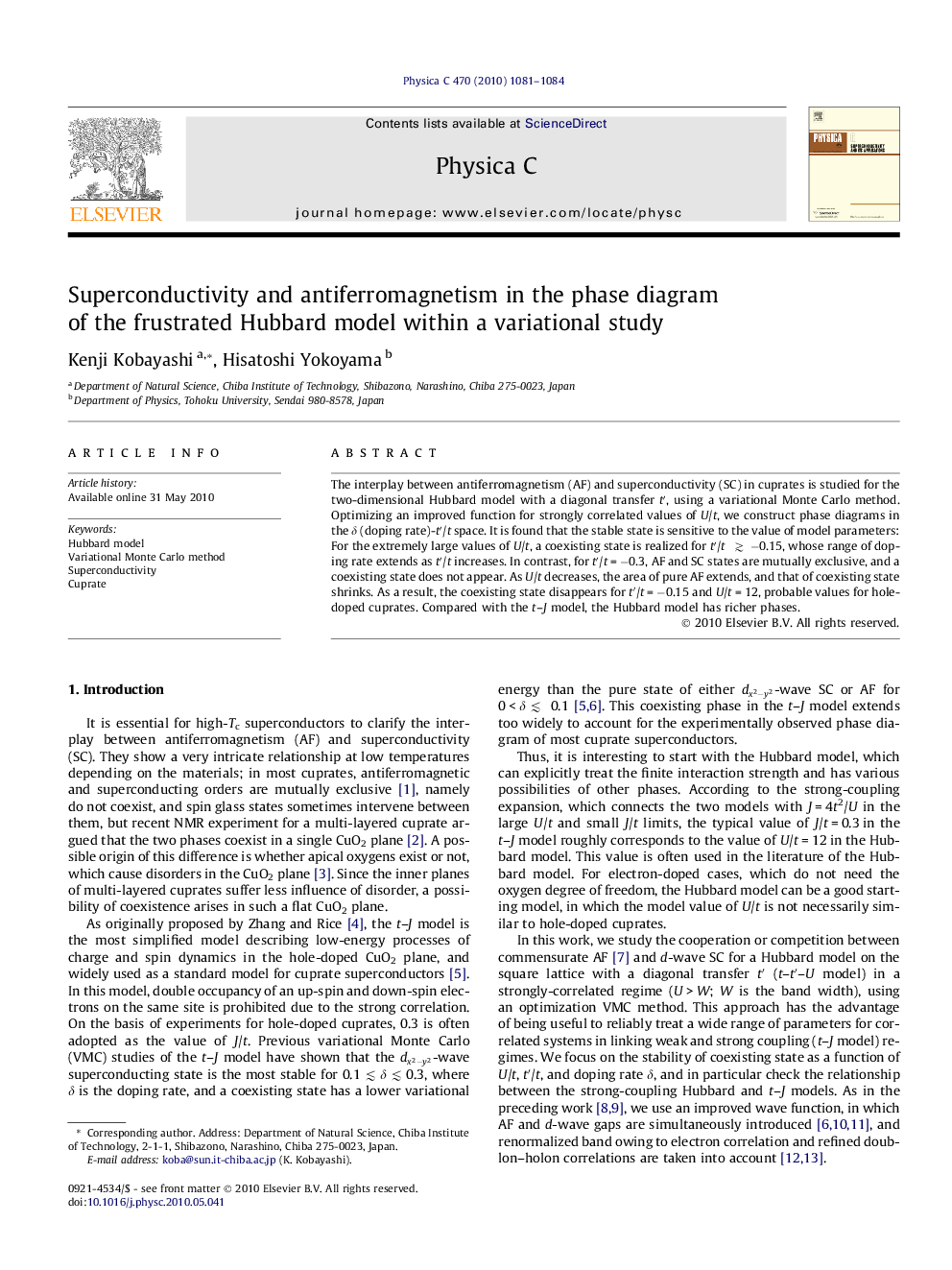| کد مقاله | کد نشریه | سال انتشار | مقاله انگلیسی | نسخه تمام متن |
|---|---|---|---|---|
| 1818698 | 1026034 | 2010 | 4 صفحه PDF | دانلود رایگان |

The interplay between antiferromagnetism (AF) and superconductivity (SC) in cuprates is studied for the two-dimensional Hubbard model with a diagonal transfer t′, using a variational Monte Carlo method. Optimizing an improved function for strongly correlated values of U/t, we construct phase diagrams in the δ (doping rate)-t′/t space. It is found that the stable state is sensitive to the value of model parameters: For the extremely large values of U/t, a coexisting state is realized for t′/t ≳ −0.15, whose range of doping rate extends as t′/t increases. In contrast, for t′/t = −0.3, AF and SC states are mutually exclusive, and a coexisting state does not appear. As U/t decreases, the area of pure AF extends, and that of coexisting state shrinks. As a result, the coexisting state disappears for t′/t = −0.15 and U/t = 12, probable values for hole-doped cuprates. Compared with the t–J model, the Hubbard model has richer phases.
Journal: Physica C: Superconductivity - Volume 470, Issue 20, 1 November 2010, Pages 1081–1084